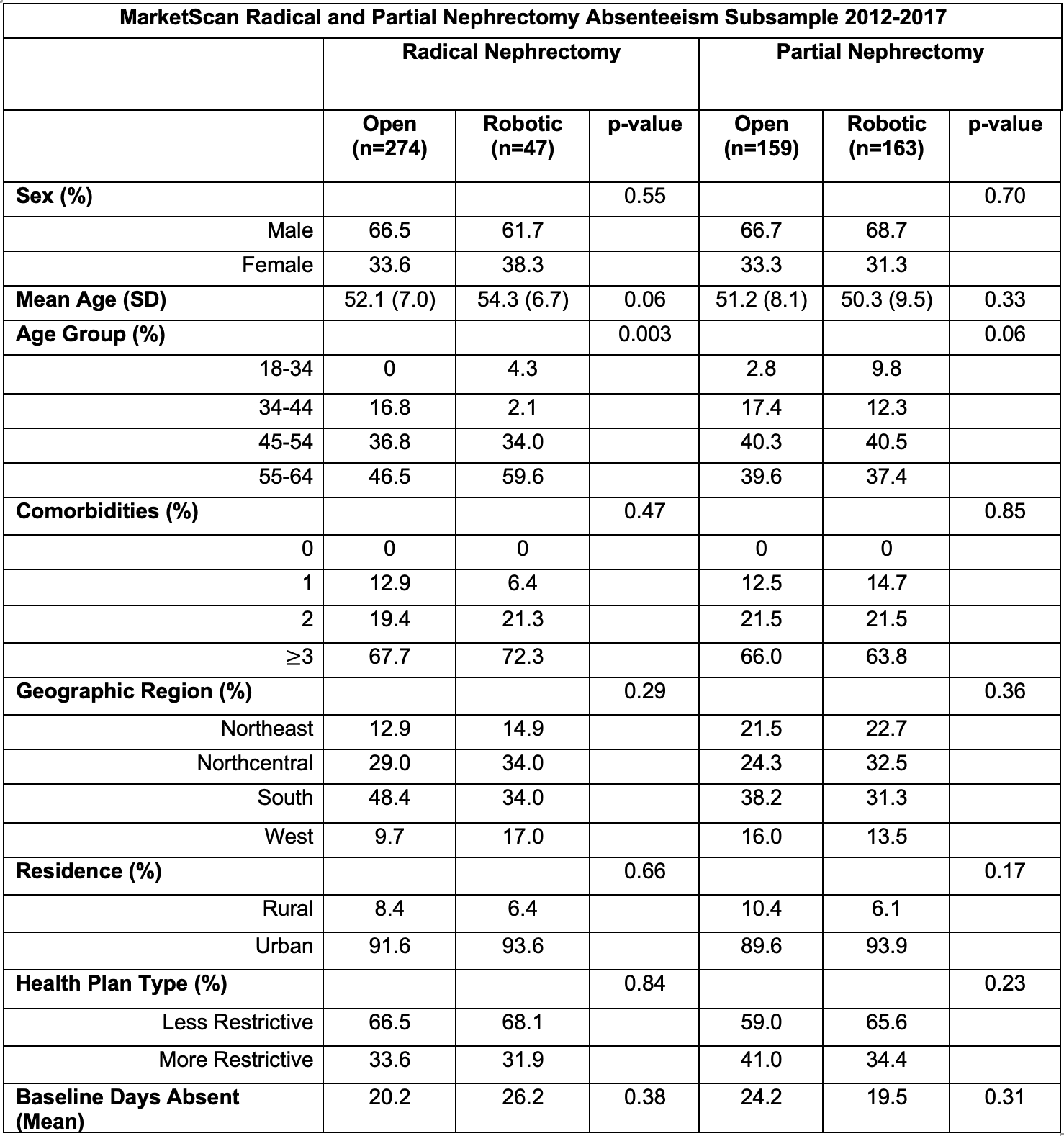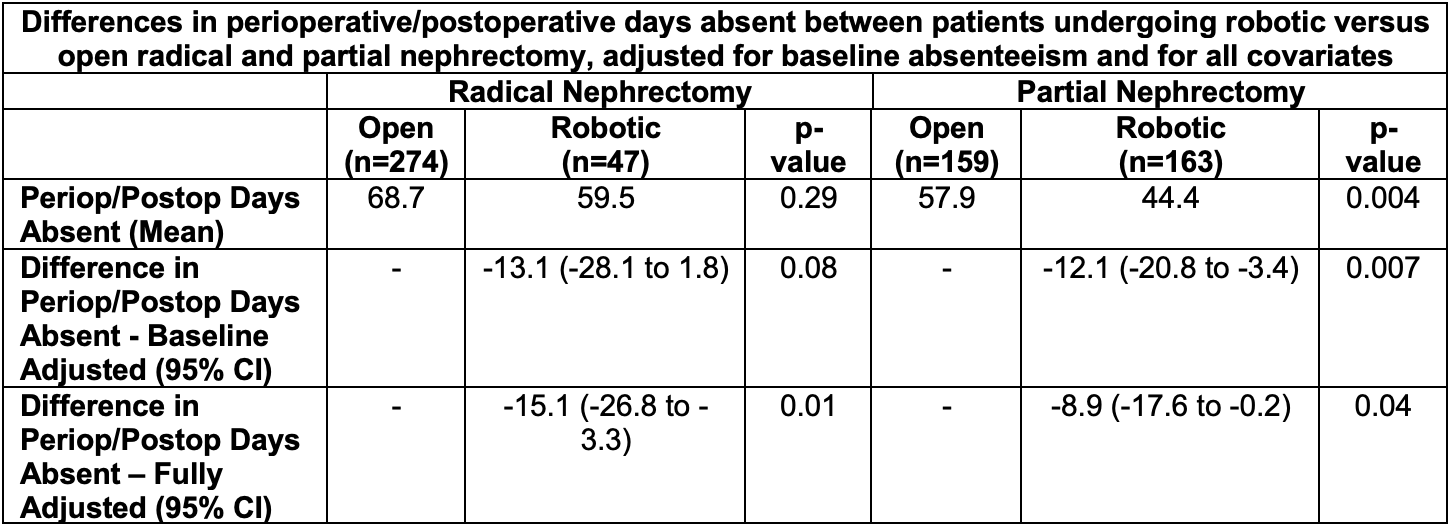Workplace Absenteeism Following Robotic and Open Kidney Surgery
Alexander P. Cole, MD1, Daniel Pucheril, MD1, Xi Chen, MS1, Prokar Dasgupta, MBBS2, Quoc-Dien Trinh, MD1
1Brigham & Women's Hospital, Harvard Medical School, Boston, MA, 2Faculty of Life Sciences and Medicine, Kings College London, London, United Kingdom
Background: Robotic surgery is increasingly employed for the management of renal tumors. However, the perioperative cost of robotic surgery is greater than open surgery. Our objective was to investigate differences in workplace absenteeism between open and robotic approaches amongst patients undergoing radical (RN) and partial nephrectomy (PN). METHODS Patients aged 18-64, undergoing open or robotic RN or PN from 2012-17, and having data on workplace absenteeism were identified within the Truven Health MarketScan® Database. Three study periods were established relative to the date of surgery: baseline (-380 to -15 days), perioperative (-14 to +28 days), and postoperative (+28 to +352 days). The outcome of interest was the total number of days absent from work in the combined perioperative/postoperative period and was calculated by summing days absent for vacation, sick leave, and short-term disability. The propensity score for receiving robotic surgery was calculated based on demographic covariates. A multiple regression model determined the independent effect of surgical approach on absenteeism controlling for baseline absence and propensity score. RESULTS In total, 203 and 308 patients met inclusion criteria for RN (156 open, 47 robotic) and PN (145 open, 163 robotic), respectively. Aside from the distribution of age groups (p=0.003), baseline characteristics were statistically similar between open and robotic patients undergoing RN. There were no statistical differences between open and robotic patients undergoing PN. In the fully adjusted model, patients undergoing robotic RN and PN missed 15.1 (95%CI 3.3-26.8) and 8.9 (95%CI 0.2-17.6) fewer days of work relative to their open counterparts, respectively. CONCLUSIONS Patients undergoing robotic kidney surgery return work sooner than patients undergoing open kidney surgery. The additional perioperative cost of robotic surgery may be offset by earlier return to work. 

Back to 2019 Abstracts
